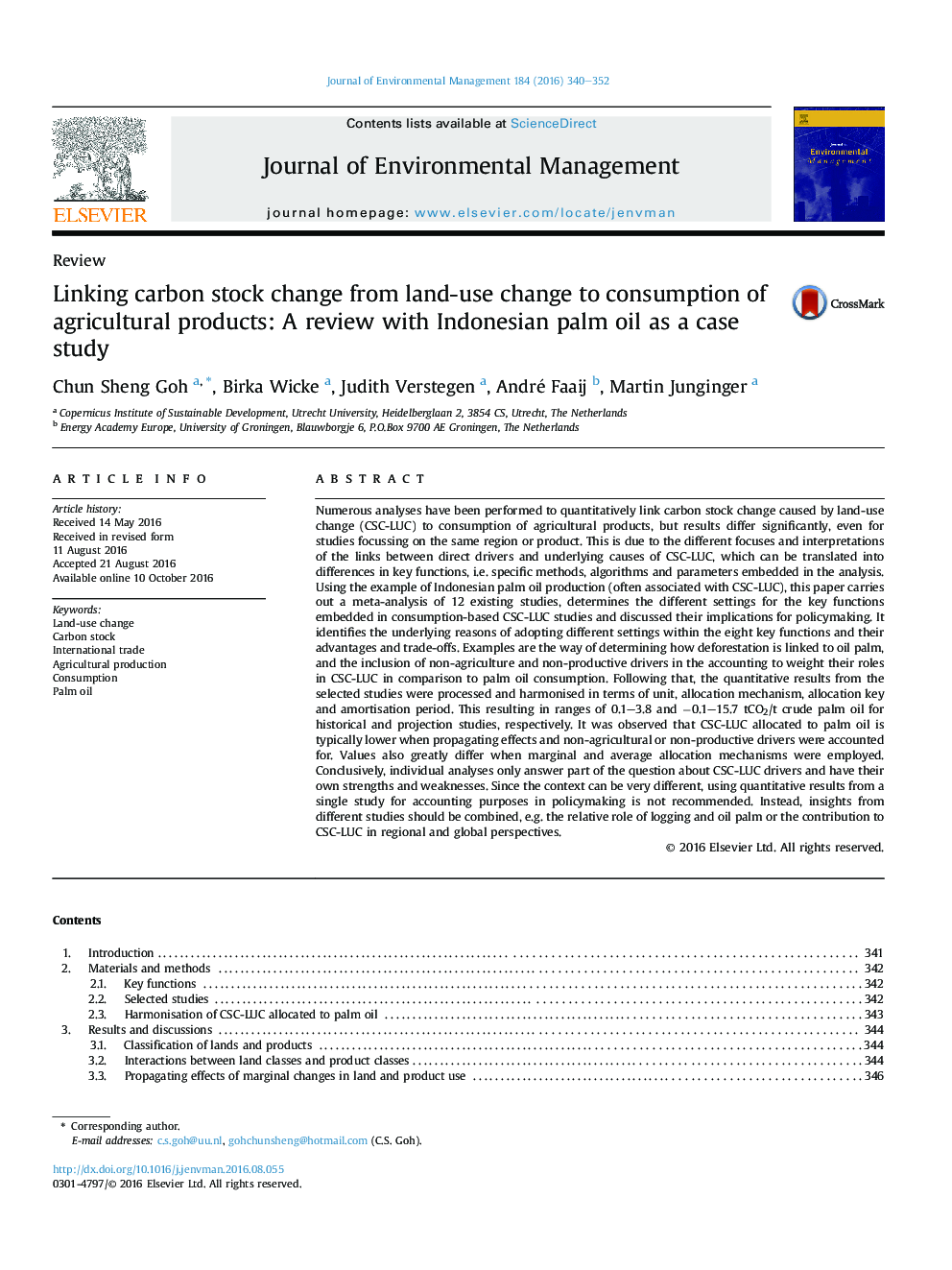| کد مقاله | کد نشریه | سال انتشار | مقاله انگلیسی | نسخه تمام متن |
|---|---|---|---|---|
| 5117099 | 1378115 | 2016 | 13 صفحه PDF | دانلود رایگان |
- Differences in the key functions lead to a wide range of quantitative results.
- The ways of determining how CSC-LUC is linked to oil palm are subjective.
- The roles of non-agriculture & non-productive drivers are crucial but mostly excluded.
- Historical CSC-LUC allocated to Indonesian palm oil ranged 0.1-3.8 tCO2/tCPO.
- Projected CSC-LUC for Indonesian palm oil ranged from â0.1 to 15.7 tCO2/tCPO.
Numerous analyses have been performed to quantitatively link carbon stock change caused by land-use change (CSC-LUC) to consumption of agricultural products, but results differ significantly, even for studies focussing on the same region or product. This is due to the different focuses and interpretations of the links between direct drivers and underlying causes of CSC-LUC, which can be translated into differences in key functions, i.e. specific methods, algorithms and parameters embedded in the analysis. Using the example of Indonesian palm oil production (often associated with CSC-LUC), this paper carries out a meta-analysis of 12 existing studies, determines the different settings for the key functions embedded in consumption-based CSC-LUC studies and discussed their implications for policymaking. It identifies the underlying reasons of adopting different settings within the eight key functions and their advantages and trade-offs. Examples are the way of determining how deforestation is linked to oil palm, and the inclusion of non-agriculture and non-productive drivers in the accounting to weight their roles in CSC-LUC in comparison to palm oil consumption. Following that, the quantitative results from the selected studies were processed and harmonised in terms of unit, allocation mechanism, allocation key and amortisation period. This resulting in ranges of 0.1-3.8 and â0.1-15.7 tCO2/t crude palm oil for historical and projection studies, respectively. It was observed that CSC-LUC allocated to palm oil is typically lower when propagating effects and non-agricultural or non-productive drivers were accounted for. Values also greatly differ when marginal and average allocation mechanisms were employed. Conclusively, individual analyses only answer part of the question about CSC-LUC drivers and have their own strengths and weaknesses. Since the context can be very different, using quantitative results from a single study for accounting purposes in policymaking is not recommended. Instead, insights from different studies should be combined, e.g. the relative role of logging and oil palm or the contribution to CSC-LUC in regional and global perspectives.
Journal: Journal of Environmental Management - Volume 184, Part 2, 15 December 2016, Pages 340-352
